On The Ground
Onboard electronics
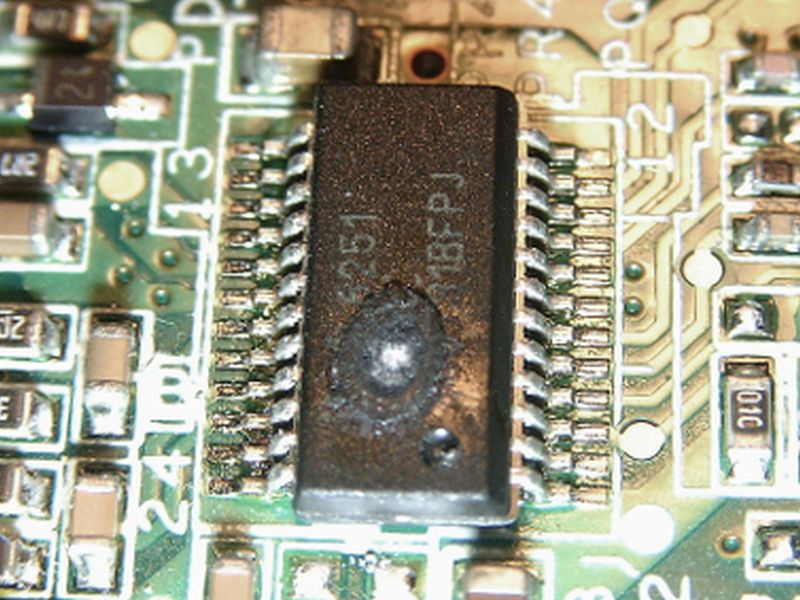
This application is mainly related to the ionizing particles sent by the far stars, called the cosmic rays. When the Sun is active, it produces faster solar wind, which spreads the cosmic rays more effectively before entering the solar system. Conversely, we are more exposed to this cosmic radiation, even at sea level, when the Sun is quiet. The cosmic rays are mostly stopped in the atmosphere above 10 kilometres high through collisions with the air. These collisions produce an “air shower”, cascades of so-called secondary particles. At sea level, their quantity is reduced by a factor of about 300, but only by a factor of 3 at an altitude of 9 kilometres. Electronics circuits are everywhere and are becoming more and more miniaturized: they are more and more sensitive to this secondary radiation, being less protected by surrounding matter. Trains and cars are full of them. It is impossible to predict instant air showers due to space weather and space climate as they are overall governed by the space climate. Thanks to that, we can predict the actual probability such problems can happen due to higher overall incoming cosmic-ray related radiation. HF communications The Earth’s upper atmosphere ionized part is called the ionosphere which is embedded in the thermosphere which is name for the neutral component of atmosphere in similar heights. Specific electron concentration vibrates with its specific frequency, called the "plasma frequency". As the electron concentration varies with altitude, the plasma frequency also varies naturally. Its frequency range corresponds to the High Frequency (HF) emissions in telecommunications, typically around 10 MHz. What happens if we send a wave of this frequency to the ionosphere? It resonates with the ionosphere, ricochets off it like of a mirror and returns to the ground. This is all it takes to remotely communicate. A transmitter, another receiver thousands of kilometres away and ... a good knowledge of the state of the ionosphere. This principle is not only of interest to radio amateurs. The military often use it, especially at sea where the transmitter can aim very low without being hampered by terrain attenuations. It is not surprising that most of the major military countries have their own operational space weather and space climate tools and battalions. The army is obviously also interested in all the space impacts described above, but it has its own needs. For example, it has developed a radar that uses the bounce of a wave in the ionosphere to detect a missile on the other side of the horizon. Needless to say, forecasts of geomagnetic activity must be accurate. One cannot risk a retaliation if the so-called missile detected is in fact a plasma bubble moving in the ionosphere. This is why the detection of these currents, and the local prediction of electron concentration variations are so important.
Ground Induced Currents
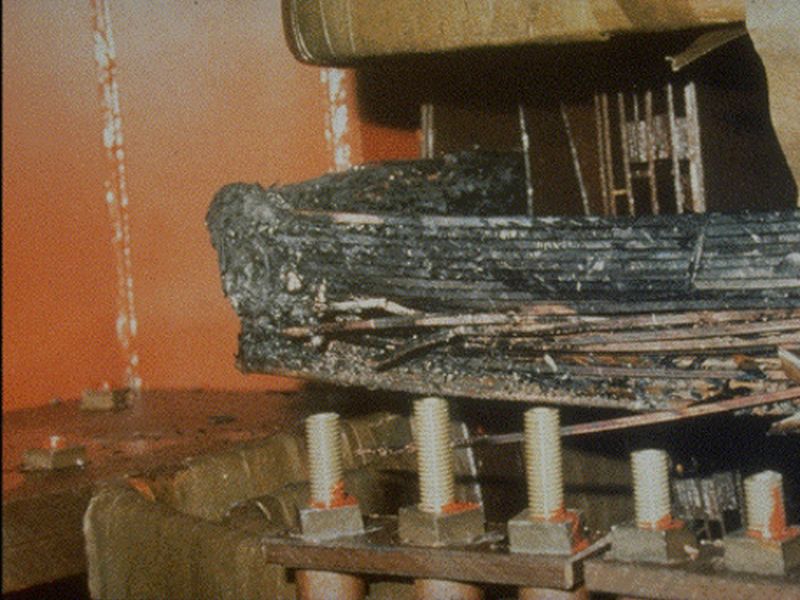
There are many ground impacts of space weather and space climate The one that has been most popularized can be considered as the birth certificate of the discipline... In a minute and a half, a 9500 W transformer literally melted in Quebec in 1989. What happened?
The magnetosphere is a place in which several electrical currents flow. Of course, there are few electrons and ions, but the distances are so great - several tens of thousands of kilometres - that their average intensity amounts to several million Amperes, that is to say ten to one hundred times greater than the currents in a lightning. From near to far, through the electric field they produce, they force the electrons circulating in the conductive soils to follow their movement, creating induced geomagnetic currents, of low intensity, but nevertheless formidable. The reason is that they propagate slowly, like direct current. Other long and metallic structures are also affected by induced currents: railroad cables, high voltage lines, etc. At the ends of these are power plants and transformers which transform an alternating current of a certain voltage into an alternating current of another voltage with the help of giant copper coils. When they receive direct current, or slowly varying current as in the case of geomagnetic induced currents (GIC), they heat up. They are designed to absorb GICs of low intensity without damage, i.e., those produced by an average solar wind. However, some of them were not able till recently to autonomously switch off as they cannot cope with the consequences of large solar events. It should be noted that such currents can have an intensity of more than thirty amperes for tens of minutes.
In the United States, in 1992, during a magnetic storm, an increase in temperature of the transformers from 60°C to 175°C was noted. But the heating can be so strong that the coils literally melt, as it was the case in 1989 in the USA and in Canada. This is big issue: we are not talking about small transformers as you use for your daily life, but about some of the biggest manufactured objects on the planet: 9500 MW for the one that was damaged in 90 seconds in Quebec. The costs are considerable. The blackout of March 13 and 14, 1989 plunged five million people in Quebec into darkness, creating formidable difficulties in hospitals, retirement homes... The cost is estimated at two billion US dollars. A transformer in the USA was put out of service - twelve million dollars - while two others in Great Britain were damaged. Incidentally, 1600 satellites were momentarily "lost" in the space environment...
To counter this, we resort to surveillance. Electricity companies in countries with conductive ground have multiplied the number of electrical sensors. When a wave of current breaks and heads towards a power station, there are only few minutes to reduce production to unload the transformer and source it instead from elsewhere if the topology of network is adequately redundant.
HF Communications
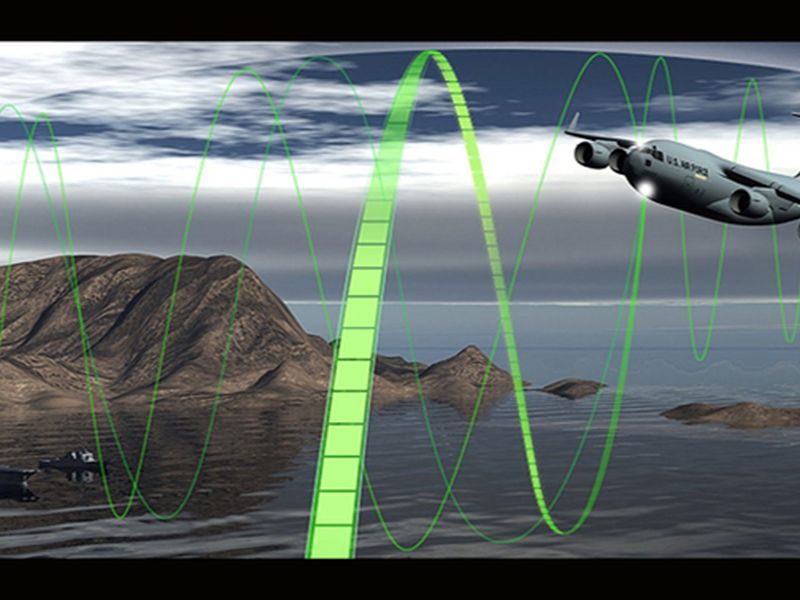
Perhaps more worrisome is the dependence of air networks on space weather and space climate. To monitor the airspace, airports use two types of radar. The "primary" ones are used to locate aircraft in an airspace. Secondary Surveillance Radars (SSR) send coded requests to aircraft and retrieve auxiliary information in return: identification, external pressure and, for some systems, selected technical parameters. If the aircraft does not have the equipment to communicate with them, the secondary radars simply do not see them. To request information from an aircraft, they use the 1030 MHz frequency. To receive them, they use 1090 MHz. On November 4, 2015, the Sun is experiencing a surge of activity that manifests itself in a series of flares accompanied by strong radio wave emissions. By chance, they are concentrated around 1 GHz, precisely the band used by SSRs. Space weather and space climate is still unable to predict these radio bursts, let alone the frequency range in which they will occur. When they are detected, it means that they have arrived on Earth. All the secondary radars that were pointing at the Sun at that time were affected. This concerned Western Europe. In Belgium, echoes of ghost planes occur between 3 and 4 pm (local). The computer system correctly identifies these false alarms and filters them out. Incidents are also reported in Greenland, disrupting the landing of a plane. But it is in Sweden that the effect is the most striking. The secondary radars became totally inoperative. Air traffic controllers, deprived of information, were forced to reduce aircraft movements, divert some, and prevent take-offs. It was soon paralysis in Stockholm, creating a traffic jam that spread throughout northern Europe. For a few seconds of solar emission, the European sky was partially paralyzed. Airplane delays and passenger diversions cost airlines hundreds of thousands of euros. What would be the cost of a longer, more intense event? Space weather and space climate are actively looking for "precursor" signs. A radio burst, for example, occurs outside the impulsive phase of a flare, and often arrives about thirty minutes after an X-ray emission. It is often associated with a particular structure of the solar magnetic field. But we have only a few years of observation of the Sun, too few to draw a generalization. We must admit that for the moment, we are unable to predict new such radio bursts.
Oil Drilling
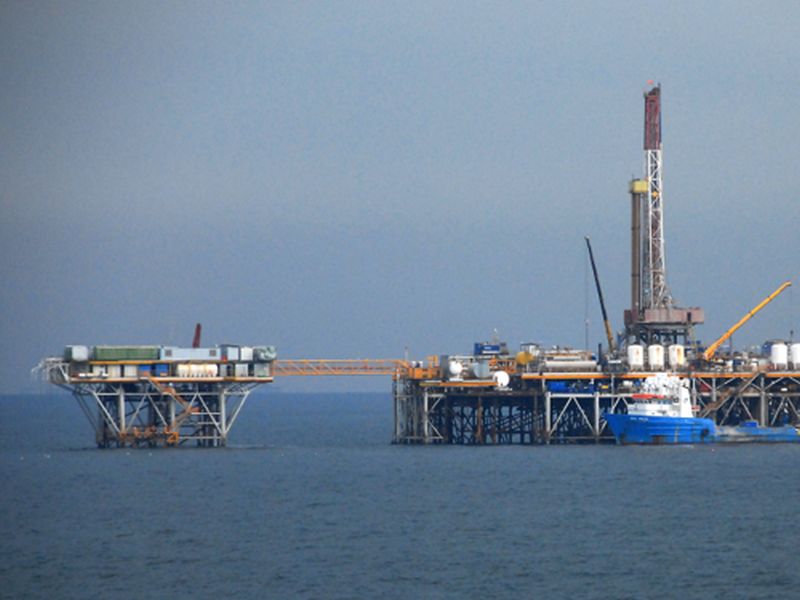
Other spin-offs of space weather and space climate may seem surprising. Who would think that oil drilling depends on solar storms influencing geomagnetic activity? Moreover, we all have in mind the drilling towers of the oil fields of the Gulf countries: forests of derricks several tens of meters high. The oil platforms, maritime monsters, are also well known. These two techniques drill vertically: they are placed above the oil tank. But sometimes the oil reservoir is located in a place that is difficult to access: under a lake, for example. In this case, it is better to drill at an angle. How do you find your way under the ground? The answer seems obvious: you take a map, point in the right direction, and go straight. However, going straight underground is not so easy. You may have to go around a vein of rock that is too hard and a small error of angle and one misses the oil or hits some previously drilled path that is already flooded. Since GNSS positioning does not go underground, the best way to proceed is to use the Earth's magnetic field. Oil company geologists have developed the most accurate field maps in the world. Their problem is that if a geomagnetic storm occurs, the field is disturbed by several hundred nanotesla. This small one percent change can lead to an error on the pointing axis that can ultimately be very costly. While waiting to be able to quantify the modifications of the internal field due to a magnetic storm, oil companies need a fine forecast of the activity, so as to stop the drilling to avoid an error of direction. But even that has a cost because you can't stop a drilling. If you do, the rock closes in around and jams the drilling head irreparably, costing millions of dollars. Oil companies are not dependent on space weather and space climate only for drilling. Another impact is the corrosion of the pipelines (oil and gas pipelines). These are made of a lot of metal, generally good conductors of electricity. However, electrons flowing along the metal structures, as a result of induced currents generated by geomagnetic storms, amplify corrosion mainly at the connections between the segments. How can this be avoided? By keeping the electrical potential slightly negative in relation to the ground (-0.85 volts). What a waste of energy, especially since the pipelines run for thousands of kilometres. So of course, a very low potential is maintained, just enough to repel electrons from the ground. Let a strong solar-originated magnetic field disturbance arrive with the solar wind, and the geomagnetically induced currents increase. The electric potential of the ground becomes too high, it reverses in relation to that of the pipelines that the electrons attack and corrode. It is therefore necessary to monitor thousands of kilometres of pipes, especially when the Sun is active. The cost of such monitoring is not negligible: in Alaska, operators must be picked up from their backyards, dropped off on a section of the pipeline (1288 km long) of which they can only travel a small portion during the day, and returned to pick them up in the evening. For this particular pipeline, however, the most important damage is due to American citizens practicing shooting...
Radiation

Aviation is not immune to solar hazards. Flight personnel could receive important doses of charged particles, especially when passing under the auroral oval. The unit that evaluates the biological impact of human exposure to ionizing radiation is called the Sievert. In nature, the average radiation is 2.4 millisieverts per year. During a radiological examination, we receive about 0.7 millisieverts. The people who worked in Chernobyl immediately after the explosion of the power plant received the lethal dose of 2 Sieverts. Astronauts should not receive more than 1.5 Sieverts in their entire career. This is what some solar events produce in less than a day. In August 1972, the radiation dose received on the Moon from a solar storm was estimated at 7 Sieverts per hour. By an incredible chance, no Apollo mission was flying that day: the astronauts would have all died, having received more than 15 Sieverts in a few hours. For aviation, the international standards are even more drastic: one should not receive more than 100 millisieverts over five consecutive years, and no more than 50 in one year. A major modelling effort has been performed to calculate the theoretical dose to personnel on a large number of flights. It was estimated that in September-October 1989, a dose of 100 microsieverts per hour was received at Concorde flight altitudes, and 20 microsieverts per hour at more conventional altitudes and that in 1956, a solar event could have irradiated flights with doses even 1000 times higher. This is still below the limit in general, but the concern is significant enough to be a permanent safety check.
Tourism & Aurorae
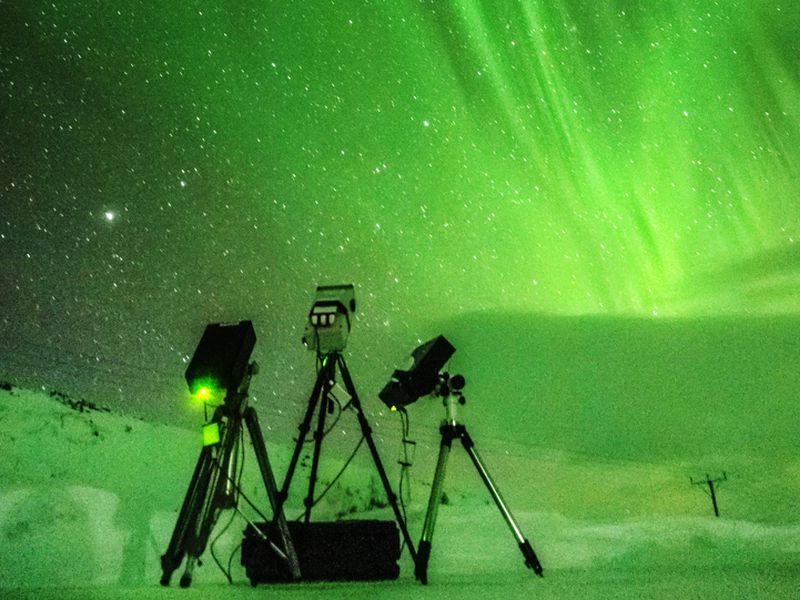
Tourism is of course another potential customer of space weather and space climate. The polar aurorae have become incredibly popular. Tour operators are ready to fill a plane with tourists to see the Northern Lights if they are sure to see them. Even on warning, one or two days before. Northern countries have understood this, Finland in the lead, which has equipped itself with observation posts well heated in glass bubbles.
